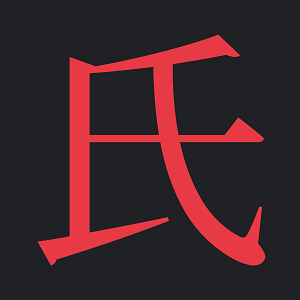氏
부수: 氏
획수: 4획
氏 has the meanings ‘clan name’, ‘surname’ and ‘Mr./Ms./Mrs.’.

氏 = 氏
X = phonetic borrowing
Caution: The interpretation of 氏 is unclear.
• 氏 is suggested to originally depict a mallet, with the meaning ‘clan name’ coming from a sound loan.
Other scholars suggest 氏 originally depicted a ladle 匕 and a cooking pot. The meaning of ‘clan’ is suggested to arrive from 𠂤 which possibly had a similar pronunciation to 氏. 𠂤 is believed to have originally meant ‘buttocks’. From the shape of buttocks comes ‘hills’ — which is where noble families lived on top of. These families would be referred to as ‘such-and-such 𠂤‘.
Another interpretation suggests 氏 depicts a person bent over; either working in the fields or bowing.
Evolution:
氏 = ’mallet’ ➔ borrowed use ➔ ’clan name’ ➔ ’surname’
Mnemonic
Since the interpretation of 氏 is largely unclear, brute force memorisation is recommended. Alternatively, take 𠂤 as depicting buttocks and imagine a rich family 氏 living on top of a hill. Their children are born with silver spoons 匕 in their arses.
Vocab
| 金氏 | 김 씨 | Mr. Kim |
| 氏族 | 씨족 | clan, family |
| 宗氏 | 종씨 | being from the same clan |
| 氏名 | 씨명 | one’s full name |
| 季氏 | 계씨 | someone’s younger brother (dated language) |
| 某氏 | 모씨 | ‘a certain person’ (dated language) |
| 攝氏 | 섭씨 | Celsius |
Other resources
Image searches
Google
Bing
Yahoo Japan
Baidu (click 图片)
Sogou
Pinterest
Flickr
CJKV
CJKV Dict
Wikitionary
Unihan Database
Korean
Chinese
Written Chinese
Arch Chinese
ZDic
CC-Canto
Chinese Text Project
The Chinese University of Hong Kong (etymology)
Chinese Boost
Japanese
Takoboto
Jisho
JLearn.net
Sakura
The Kanji Map
Sentence Search
Immersion Kit
Vietnamese
Bibliography
— Grant, B.K. (1982). A Guide To Korean Characters: Reading and Writing Hangul and Hanja, [s.v. 102]. Seoul: Hollym.
— Henshall, K.G. (1998). A Guide to Remembering Japanese Characters, [s.v. 495]. Singapore: Tuttle Publishing.
— Outlier Dictionary of Chinese Characters, [s.v. 氏].
— Seely, C., Henshall, K.G., & Fan, J. (2016). The Complete Guide to Japanese Kanji: Remembering and Understanding the 2,136 Standard Japanese Characters, [s.v. 522]. Singapore: Tuttle Publishing.